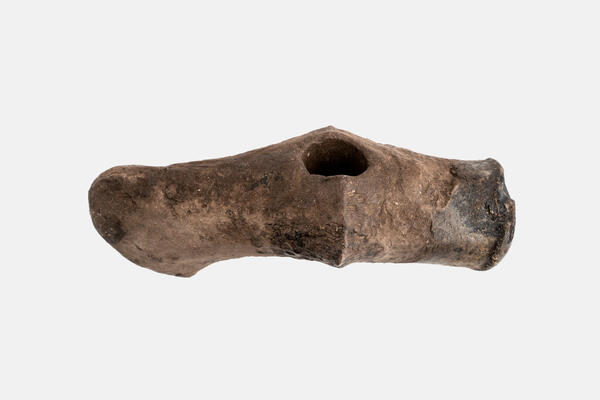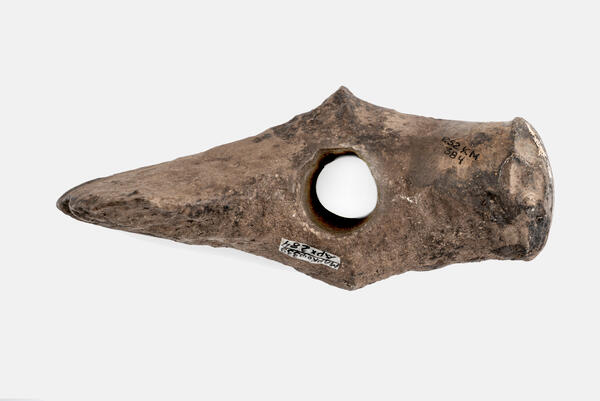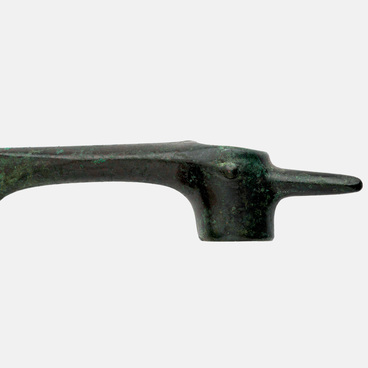The exhibition of the Chelyabinsk State Historical and Archaeological Museum-Reserve “Arkaim” presents a clay ax with a hanging pole from the Kalmyk Molelnya burial site. The ax butt is made of stone, it is blunted, rounded, suboval in cross-section. The shaft-hole part and the blade are made of clay. The blade is rounded, widening towards the end. The shaft-hole is cylindrical, round in cross-section, with traces of drilling on the inner surface. On the lateral surfaces in the area of the shaft-hole there are opposite protrusions: one is sharpened, the other is smoothed. The ax is of the Kabardino-Pyatigorsk type. A large number of stone eyed axes of this type found in the Southern Trans-Urals and neighboring regions can be explained only by their necessity in social and cult practice.
Archaeologists believe the North Caucasus to be the original area of borrowing, where finds of similar objects number in dozens. The common features of metal production borrowed by the Sintashta metallurgists of the Southern Urals from the North Caucasus indicate the presence of stable links between the regions in the Bronze Age. The size of axes, diameter of eyelets, material of manufacture and thoroughness of surface treatment suggest non-combat use of axes of the Kabardino-Pyatigorsk type. Besides, there is no confirmation of the hypothesis that such stone axes were a token of the warrior status of the buried person in the Late Bronze Age burial sites of the Southern Trans-Urals and Northern Kazakhstan.
Archaeologists have come to recognize that Indo-Iranian steppe pastoralist tribes of the Srubnaya-Andronovo communities of Eastern Europe and adjacent areas of the steppes of Asia created the most ancient parts of the Vedas and Avesta. According to Nilolai Vinogradov, axes of the Kabardino-Pyatigorsk type could have gained wide popularity among the sedentary cattle-breeding population of the Late Bronze Age of the steppes of Eastern Europe and adjacent areas of Asia as a consequence of the propagated cult of the demigod — the hero blacksmith, the creator of all things Tvashtr, who gave people chariots, metallurgy and a number of crafts. Tvashtr’s son was the god of fire Agni (patron of blacksmiths and metalwork) and created a hammer for the god Indra, who was also his son.



